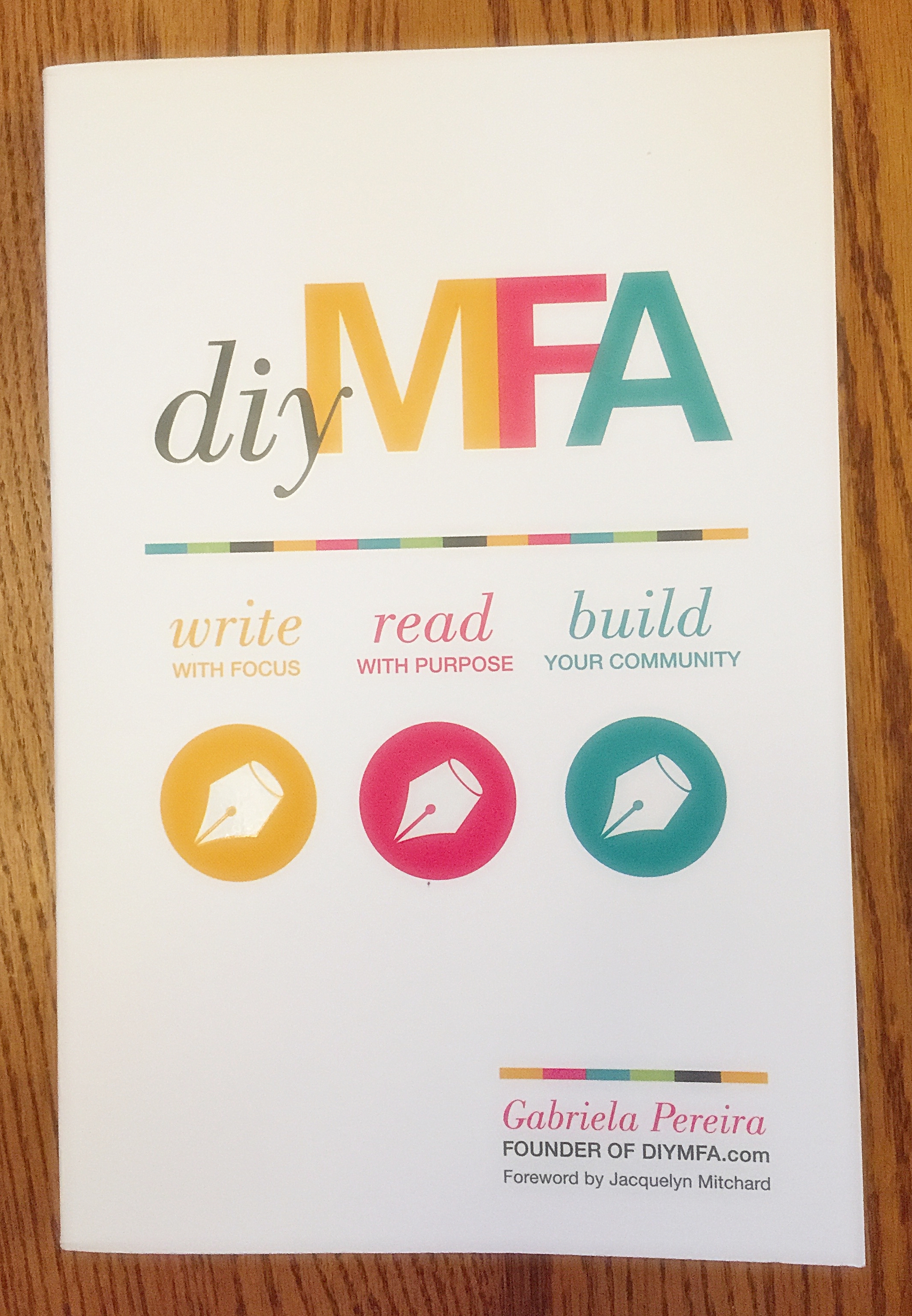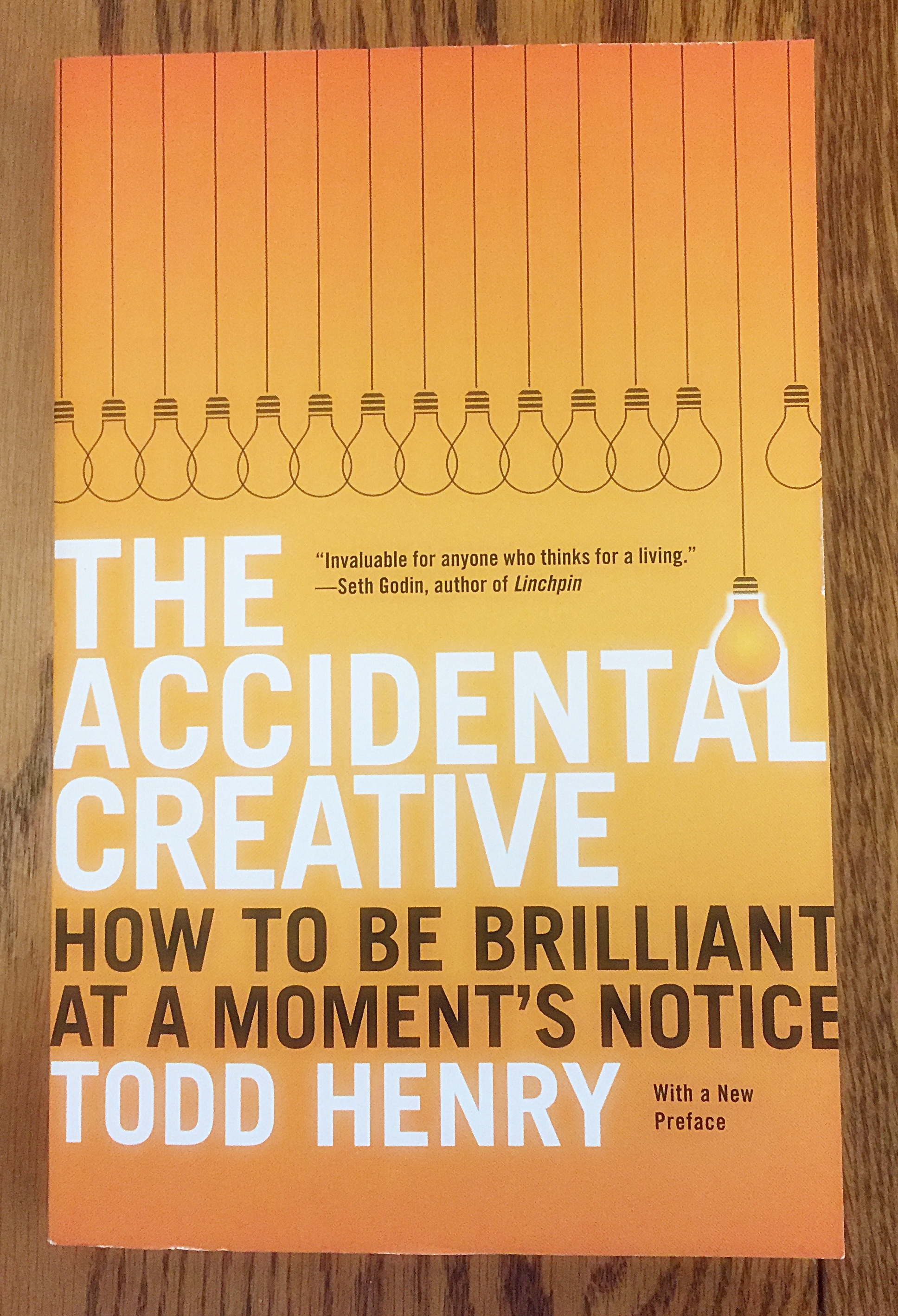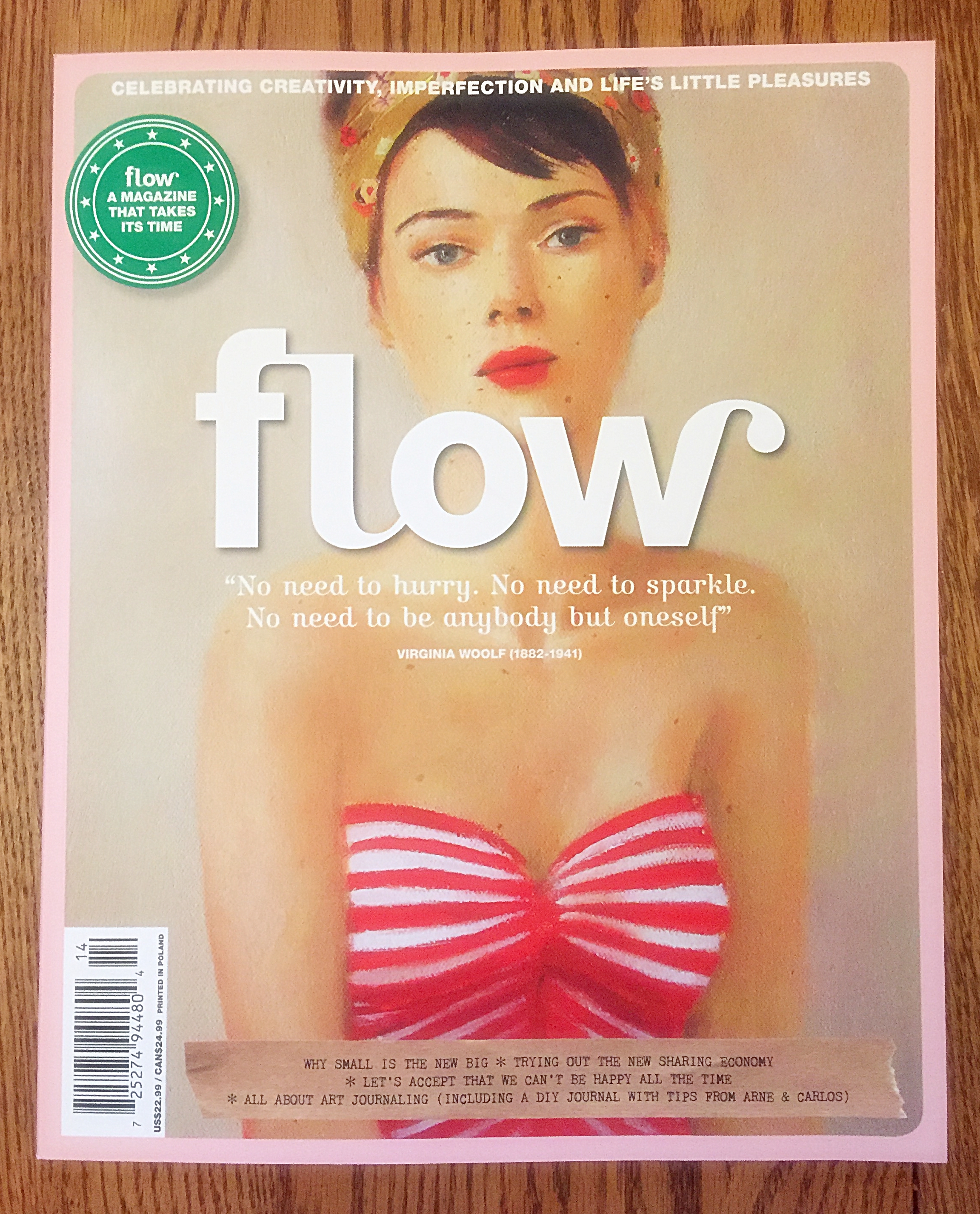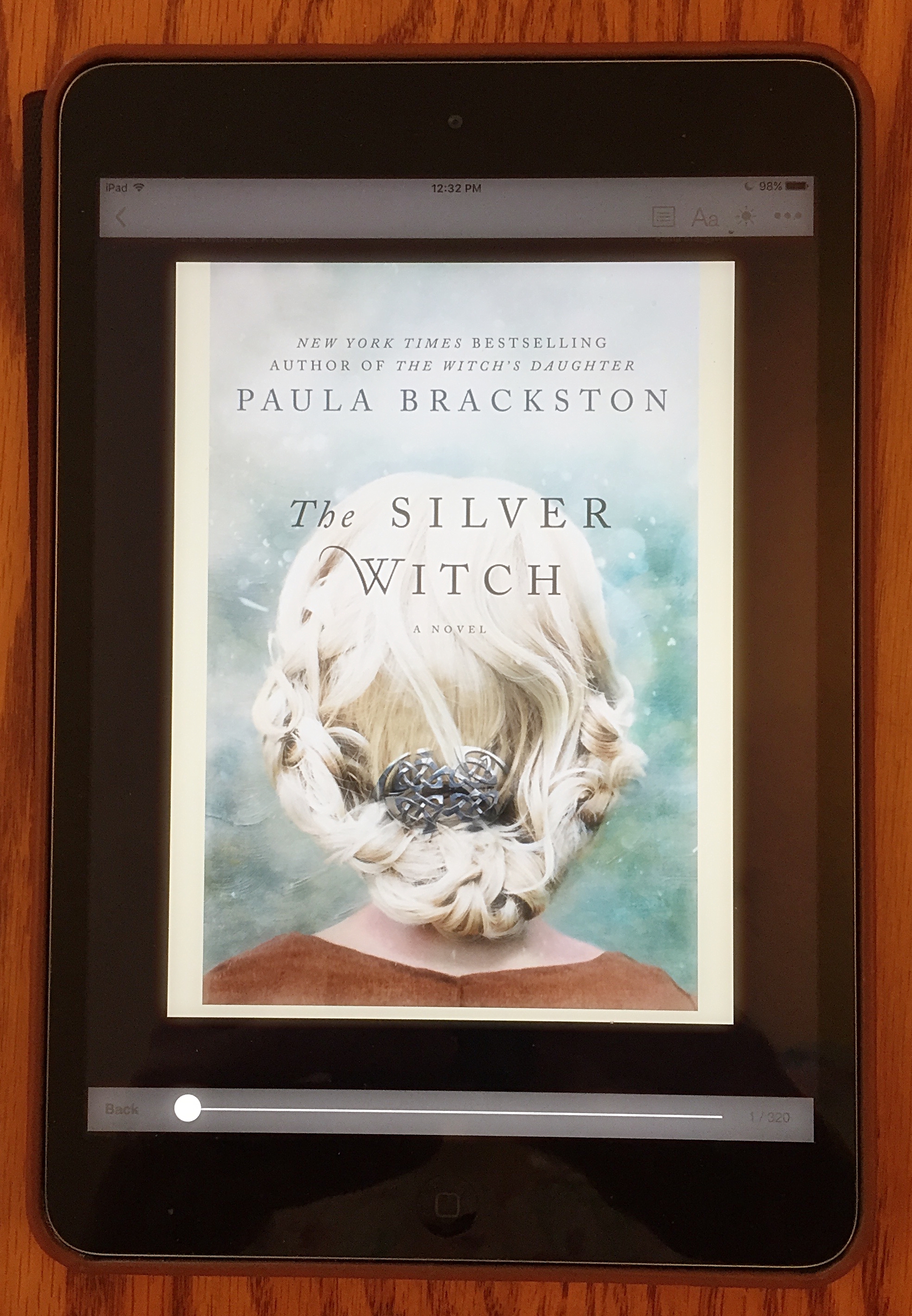Are you a one-book-at-a-time reader, or do you read multiple items simultaneously in the same way you did during your school days? I confess that my reading habits are eclectic, so you’ll find both books and magazines lying on every flat surface in the house, but also in a bag I take to work every day. I read magazines from back to front (odd, I know), skip around in non-fiction books, and read only one fiction novel at a time. In the fiction aisles I enjoy reading historical romance, suspense thrillers and science fiction, but the non-fiction topics I like best center on writing, creativity or some kind of craft. I’m fascinated, however, by Viking history and am not at all averse to fantasy—I gobbled up Deborah Harkness’ All Souls Trilogy as the books were released, one by one.
I think it’s fun, too, to compare reading lists with others, so I’m going to share my current list with you, and hope you’ll either tell me in the comments below this post what you are reading, or provide a link to a post you’ve written about the same topic. In that vein, here we go!
DIY MFA, by Gabriela Pereira. I have always had a deep desire to acquire an MFA in creative writing, but have had neither the funding nor the time to dedicate to it. Gabriela Pereira debunks the myths that surround the reasons for acquiring such an MFA, and builds her book around the idea that anyone with a desire to write can design his or her own customized writing program by combining the same elements present in most MFA programs: writing with focus, reading with purpose, and building your community. Although Gabriela’s book probably applies best to those who wish to write a fiction novel, her exercises apply to other types of creative writing, too. Her Web site, diymfa.com, is chock full of interesting articles and podcasts, and features a writing prompt app called Writer Igniter that automatically generates a prompt that you can use to exercise your writing muscles. Once you have purchased her book, visit diymfa.com/the book to get book bonuses and free access to the DIY MFA starter course. Although Gabriela’s book is not the first to provide a do-it-yourself writing program—there’s also The Portable MFA in Creative Writing, Fiction Writer’s Workshop, Gotham Writer’s Workshop: Writing Fiction, and Writing Alone and With Others—her book has a fresh step-by-step approach to blending reading, writing and community that not all books on the same topic share.

The Butterfly Hours, by Patty Dann. On my bucket list is writing a book of memories I can pass on to our son and his cousins. Patty Dan’s slim volume is thick on memories and lessons that focus on helping you transform your memories into memoir through the art of storytelling. Her book is essentially the same memoir-writing workshop she has offered to YMCA students for more than 25 years. The Butterfly Hours is peppered with stories written not only by Patty but also by her students, often triggered by single words designed to evoke memories. There are 10 lessons in the book, each filled with single-word writing prompts that will make your fingers itch to write. I fell in love with the book the moment I read Patty’s story about her late first husband, Willem, who had brain cancer. When her husband, who spoke Dutch and other languages, gradually forgot more and more of these words, he whispered to her one day, “Lieveling, we have to remember the butterfly hours.†That’s what our memories are like, of course—butterflies that flit from one location to another, creating an invisible path laced with moments that tell the story of their journey. You’ll come back again and again to the one-word memory triggers in The Butterfly Hours, telling different stories each time. I love this book!

The Accidental Creative: How to Be Brilliant at a Moment’s Notice, by Todd Henry. The premise behind this book is that your living requires you to generate creative ideas continuously, and that you need to find a way to keep good ones coming. The book applies as much to a writer as it does to a campaign manager; Todd Henry defines as a “creative†someone who solves problems, develops strategies, or generates new ideas. Sounds like everyone, doesn’t it? Todd believes that anyone can be taught to be more creative by injecting purpose into the creative process. The first three chapters of the book describe the common challenges creative people face in the workplace, while the remaining six chapters provide strategies for keeping those creative ideas coming in such a way that spells the opposite of mediocrity. Todd discusses the fallacy of compartmentalization—trying to keep your work life separate from your home life, for example—as well as the importance of balancing isolation with sharing when you are a naturally introverted creative. Even if you don’t have to earn a living being creative, The Accidental Creative will provide you with some food for thought, as well as some coping strategies for performing creatively at a high level over a long period of time.

Flow Magazine, Issue 14. Flow, a Dutch magazine published by Flow Magazine International, is my favorite magazine about mindfulness. I own every issue but the first one, which is sadly no longer available. The subtitle of this juicy volume, available four times a year, reads “celebrating creativity, imperfection and life’s little pleasures.†Issue 14, like every other issue, is divided into four sections featuring such articles as the following:
- Feel connected features an interview with designer Lotta Jansdotter.
- Live mindfully discusses how art journaling works and why it benefits you.
- Spoil yourself profiles designer Sacha Vink, who recycles, revamps and reuses old furniture and furniture parts in new ways.
- Simplify your life tells the story of journalist Anneke Bots, who spends 30 days testing “the sharing economy.â€
Every issue of Flow includes illustrations and quotes you’ll want to save, as well as bonus goodies you can remove from the magazine and use. Issue 14, for example, includes a Tiny Pleasures Art Journal. Every issue is a gift, if you’ll pardon the cliché, that keeps on giving. You’ll find the magazine in your local bookstore, but you can order individual issues or purchase a subscription from the publication office in the Netherlands. Interestingly, the difference in cost between purchasing the magazine here in the U.S. and overseas is not that great.

The Sun, October 2016 issue. The Sun is a monthly literary magazine published by The Sun Publishing Company, a non-profit organization. The magazine describes itself as “Personal. Political. Provocative. Ad-free.†I would add that it is supported entirely by readers. Its slick pages are populated with letters from readers, black-and-white photography, interviews, essays, memoirs, true stories, fiction, poetry, editorials, and a reader column called “Readers Write†that features well-written stories about topics that are announced in advance. This issue’s topic was “Restaurants.†I began subscribing to the magazine after I received a letter about it in the mail. The envelope included a sample story, a flash fiction story called Dinosaur, by Bruce Holland Rogers, about a boy who thought he was a dinosaur—a brilliant piece of writing that is only a tad over 300 words. I was charmed, provoked, saddened and gladdened, all at the same time. Read it and see if you don’t agree, and then send in your subscription order.

The Silver Witch, by Paula Brackston. Through the Kindle app on my iPad, I am reading my way through Paula Brackston’s novels about witches, stories whose deeper meaning make them rise above the average teen witch or vampire novel. Except for two novels that are connected, The Witch’s Daughter and The Return of the Witch, each of Paula’s books stands alone. Without giving away so much that I spoil the reading of the story for you, I will tell you that The Silver Witch is less about a woman who is a witch and more about a woman who loses herself after her husband dies, but gradually finds herself by connecting with others in her community and with her personal history, which just happens to involve a witch from centuries earlier. I am also fascinated by Paula’s writing from a writer’s point of view in that all of her books are told in the first person, in the present tense. This is difficult to do well, but the author does so with remarkable skill, bringing an immediacy to the action that is, of course, intended.

What are you reading now? Please share your reading list in the comments below.
© 2016 Judy Nolan. All rights reserved.

Sadly, I mostly read on the Kindle and listen to audio books these days (with the exception of a few library books) because we have a small apartment and all our book shelves are full! Right now I’m reading Start Something that Matters (I think that’s the title!) by the guy who founded TOMS and a book called the Wheel of Oshiem, which is the final book in a fantasy trilogy. I also listen to several podcasts, mostly Freakonomics and Alt.Latino (another NPR podcast).
Interesting reads. I read quite a bit for entertainment, because I am not much of a television/movie person, although my hubby is. When he watches, I read. I love historical novels, Amish novels, and mysteries, and I love research. I read quite a bit in researching for the novels that I am writing. Fun stuff!